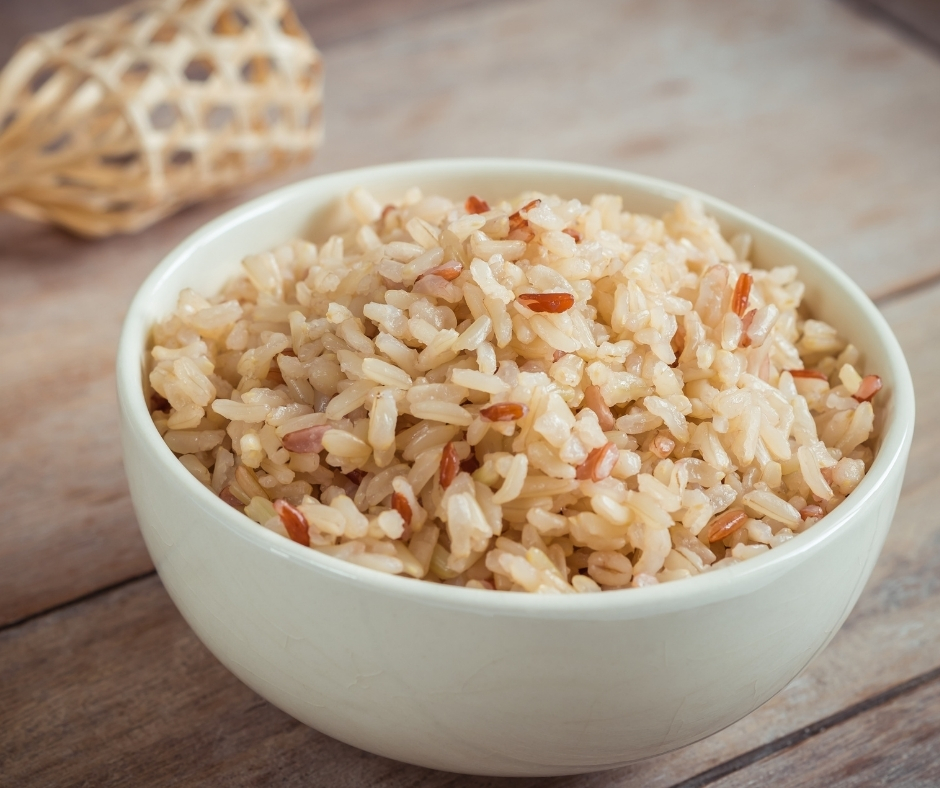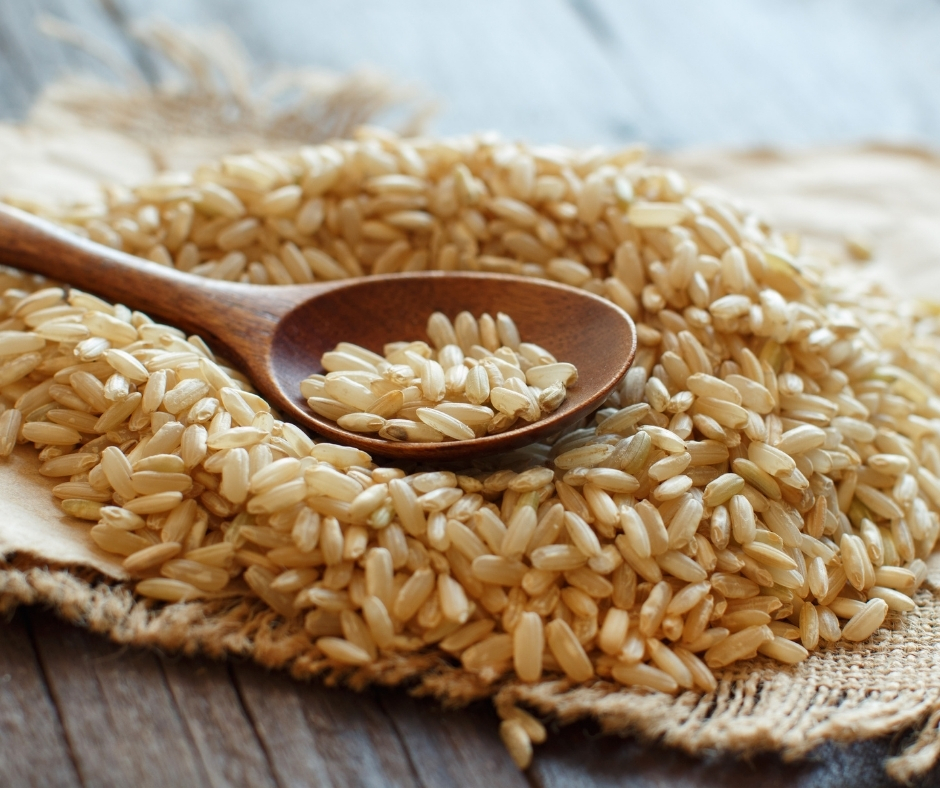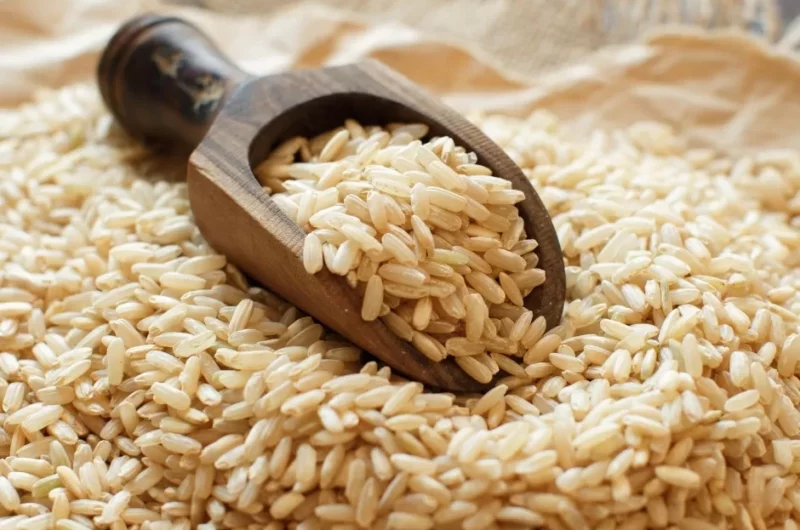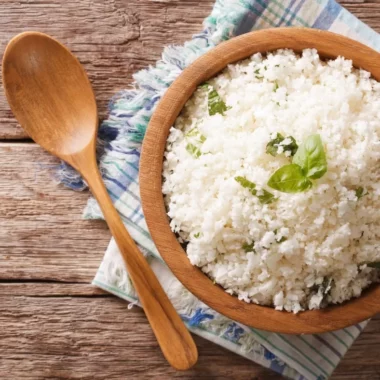Scientifically known as Oryza sativa, the versatile grain called rice is consumed by millions of people around the world. From China to India, Indonesia to South Korea, to America, and throughout the Caribbean, rice represents a major staple of more than 100 cultures. Though white rice tends to be the most popular variety of rice, brown rice is praised for its health benefits which is why brown rice consumption is on the rise.
What Is Brown Rice
Brown rice is the unrefined, unpolished whole grain that is made by removing the inedible hull encasing the rice kernel. However, the removal of the outer hull does not remove the nutrient-rich bran and germ.
Brown rice is often known for being chewier and slightly nuttier than its white counterparts. Next to wheat production, rice is the second-largest agricultural crop. Unlike oats, which are primarily grown for animal feed, human consumption accounts for 85 percent of all rice production.
History Of Rice
Believe it or not, rice has fed many humans for thousands of years. Ancient Indians referred to rice as Dhanya, which translates to nourishment for the human race.
Modern rice is the descendant of the wild grass species known as Oryza rufipogon, which was prevalent about 10,000–14,000 years ago.
There are two main subspecies of rice: japonica which is found in regions of Eastern Asia, and indica, which is common in tropical areas. In addition to this, there is also a domesticated species of rice known as O. glaberrima that was cultivated in Western Africa.
Both rice subspecies are thought to be the descendants of the same domestication event that took place approximately 8200-13,500 years ago in China. Furthermore, rice farming equipment has been uncovered in China and is estimated to be 8,000 years.
Eventually, rice spread from China to western India and Srilanka around 1000B.C. Rice is said to have been transported to Greece and regions of the Mediterranean around 344-324 B.C. by Alexander, the Great’s team on thier home from India.
From Greece, rice migrated to southern Europe and northern Africa, then onto the New World. The Portuguese transported rice to Brazil while Spanish explorers carried it to Central and South America.

Types Of Brown Rice
Interestingly enough, there are about 120,000 varieties of rice, making it the most diverse gene pool in the plant kingdom. The most popular rice varieties are brown and white rice.
Brown rice receives its flavor, color, and texture from the bran. There are 5 main types of brown rice: short grain, medium grain, long grain, light, and germinated brown rice.
Short Grain Brown Rice
Short grain brown rice feature small grains that have a sticky consistency when cooked. Therefore, short-grain rice is ideal for risotto or rice pudding. Short grain brown rice has to soak overnight before being cooked for 25 minutes.
Medium Grain Brown Rice
Medium-grain brown rice is a bit larger and plumper than its short grain counterparts. It yields a moist, tender bowl of rice when it’s cooked.
Therefore, it is ideal for soups, salads, or side dishes. It is best to soak medium-grain brown rice for a minimum of 4 hours. Add 1 cup of medium-grain brown rice to a pot of water and cook it for 10-20 minutes.
Long Grain Brown Rice
Long grain brown rice is the most common variety of brown rice. With a nutty flavor, signature golden brown color, and chewy consistency, long-grain rice can be used to make multiple dishes such as rice pilaf, stir-fries, and blackened chicken rice bowls. This type of brown rice takes about 45 minutes to cook.
Light Brown Rice
Brown rice develops a lighter shade of brown when a portion of the bran is removed while it is being milled. The end product yields a grain that is a light brown color with a nutty flavor. In addition to this, removing half of the bran decreases the cooking time from 45 minutes to 25 minutes.
Germinated Brown Rice
Germinated brown rice, also called sprouted brown rice, is a healthier version of brown rice. Closely resembling regular brown rice, germinated brown rice has a slightly sweeter taste and less chewy consistency.
In addition to this, sprouted brown rice will increase the number of nutrients you get from brown rice. In most recipes, germinated brown rice can be substituted for brown rice and takes approximately 30-40 minutes to cook.

Health Benefits Of Brown Rice
Unlike its white counterparts that are stripped of their nutrients, brown rice has several health benefits. Brown rice, germinated brown rice, and thier derivatives have several benefits like antioxidant, antidiabetic, and anticancer effects. In addition to this, brown rice also has neuroprotective and cholesterol reduction properties.
Brown rice is an exceptional source of dietary fiber. Fiber acts as a mild laxative and plays a critical role in managing blood sugar levels in persons with type 2 diabetes. Not only does fiber keep you satiated, but it can also aid the prevention of serum cholesterol.
Furthermore, fiber can prevent medical conditions such as heart disease and gastrointestinal disease. Brown rice also contains B vitamins and minerals, which can prevent beriberi and phytic acid, which is exhibits antioxidant and anticancer properties.
On the other hand, germinated brown rice has been shown to possess several physiological effects such as antihyperlipidemia, and antihypertension. In addition to this, germinated brown rice has also been implicated in a decreased risk of developing chronic diseases such as Alzheimer’s disease.
One study uncovered that brown rice sprouts have a powerful inhibitor enzyme called protylendopetidase, associated with Alzheimer’s disease. One study inferred the consumption of germinated brown rice could prevent headaches, colon cancer, and relieve constipation.
The health benefits of germinated brown rice are largely attributed to its Gamma-aminobutyric acid (GABA) content. Another study found that GABA consumption lowered blood pressure, improved insomnia, as well as an autonomic disorder that occurs during the menopausal or presenile period.
In Summation
The thought of life without rice is unbearable. After all, it is a staple of many cultures that is eaten at least a few times a week.
Luckily you don’t have to live without rice. Simply substitute brown rice for white rice. You’ll still be able to enjoy eating a bowl of rice while reaping all of the health benefits of rice.
Alternatively, if you are on a low-carb diet, you can also substitute cauliflower rice for white or brown rice.






